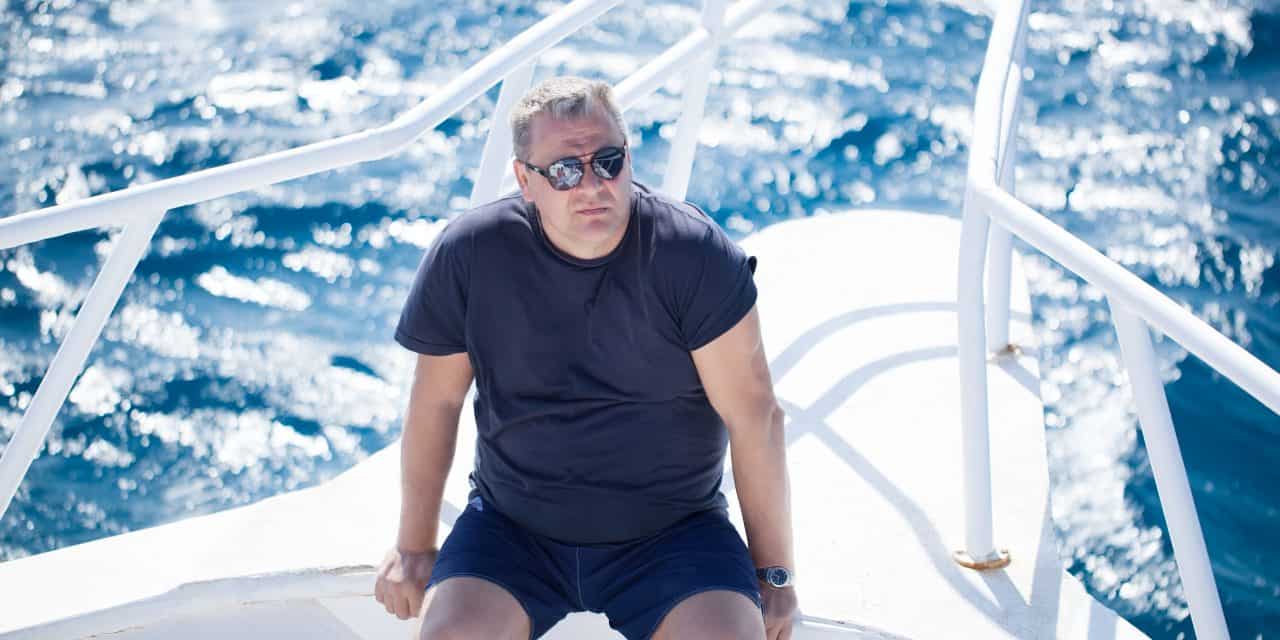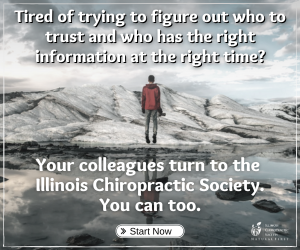
Meralgia Paresthetica

Meralgia Paresthetica is a painful compressive neuropathy of the lateral femoral cutaneous nerve (LFCN), causing “burning” pain and paresthesia in the thigh. (1-3)
The LFCN is a pure sensory nerve, supplying a large area of skin on the anterior lateral thigh. (1) The fibers comprising the LFCN originate from the L2 and L3 nerve roots before converging in the lumbar plexus. The LFCN splits directly from the lumbar plexus, then runs through the pelvis, adjacent to the lateral border of the iliopsoas muscle, before passing beneath the lateral aspect of the inguinal ligament near the ASIS. (4) The most common site of entrapment is beneath the inguinal ligament, as the nerve emerges onto the thigh. (1,4) In some instances, the nerve may be compressed more distally as it passes through the sartorius or tensor fascia lata muscles. (2)
Demographics
Meralgia paresthetica may occur at any age but is most common in middle-aged adults. (5,6) Diabetics have a nearly six-fold increased risk of developing the condition. (7-9) It does not appear there is a predilection for one side or the other. (10) The condition is present bilaterally in 20-25% of cases. (5,10-12) The condition affects men up to three times more frequently than women. (8,10-12)
Excessive compression or ischemic stretch of the LFCN is a primary etiological factor. (1,3) The increased risk in males is possibly due to occupational risks, including carpentry tool belts, police duty belts, and soldier body armor. (14,15) Other known sources of compression include excessively tight clothing, pregnancy, and obesity (BMI greater than 30). (10,16-21) Recent weight gain often precedes the condition. In fact, 8% of new cases report recent weight gains of more than 15 pounds. (10,22) The LFCN suffers a similar fate from tight-fitting clothing, jeans, belts, or body-shaping undergarments. Direct trauma, including seat belt compression, has been identified as another potential etiology. (23-25) Spending extended periods of time lying in a prone position on a hard surface (i.e. surgery) may trigger the problem. (26) Athletes who participate in gymnastics, baseball, soccer, bodybuilding, or strenuous exercise may be predisposed. (27-31) Biomechanical factors, including excessive anterior pelvic tilt or leg length inequality, may be contributors. (32,33)
Symptoms
The typical presentation includes a middle-aged patient with one or more of the aforementioned risk factors, complaining of isolated pain or paresthesia on the outside of the thigh. (1,3) The pain is described with some variability, including dull, aching, itching, buzzing or burning, and may range from mildly uncomfortable to disabling. (3,34-40) Complaints commonly include paresthesias or hypersensitivity. (3) Symptoms may impair function and sleep. (3,41) Complaints are often provoked by walking and alleviated when sitting, because sitting may decrease tension on the inguinal ligament. (11,12,41,42) Wearing tight clothing or belts will likely exacerbate the condition.
Clinicians should perform a thorough review of systems, with particular emphasis on diabetic risk factors, including a family history of diabetes: hypertension; age; gender; ethnicity; physical activity level; exertional shortness of breath; BMI; and frequent thirst. (43)
Clinical Evaluation
Clinical evaluation will demonstrate tenderness to palpation over the lateral inguinal ligament in greater than 75% of cases. (44) The primary site of tenderness is the emergence of the LFCN, approximately one to two finger widths inferior and medial to the ASIS. (44) Symptoms are usually provoked by hip or lumbar extension and relieved by flexion. (11,12,41,42) Likewise, Yeoman and Nachlas tests may reproduce the patient’s symptoms. Tinel’s sign may be present. Clinicians should assess for possible hypertonicity in the iliopsoas, tensor fascia lata, and sartorius. (32) Joint dysfunction in the lumbar, sacroiliac and hip regions may coexist. Functional evaluation should include assessment for leg length inequality, lower crossed syndrome, or paradoxical breathing.
A study of 45 patients found the “pelvic compression test” had a sensitivity of 95% and a specificity of 93.3% for meralgia paresthetica (45). This test is based on the premise the LFCN is compressed by the inguinal ligament and that relieving this compression will alleviate symptoms. The test is performed with the patient in a side posture position and focusing on his or her symptoms, while the examiner applies a downward and lateral compressive force on the upper iliac crest. By compressing the pelvis in this manner, the two attachments of the inguinal ligament are approximated, causing the ligament to become less taut. The pressure is held for 45 seconds, and the test is positive if the patient reports alleviation of the symptoms.
Neuro Evaluation
Neurologic evaluation of the lower extremity may demonstrate numbness or hyperesthesia over the distribution of the LFCN. (41) Since the LFCN is purely a sensory nerve, motor or reflex changes would suggest alternate pathology (i.e. lumbar disc lesion). (1) Clinicians may assess neurodynamic flexibility of the LFCN, with the patient in a side-lying position, affected side up, knee bent to 90 degrees, while the clinician extends and adducts the patient’s hip (LFCN Neurodynamic Test). (46,47)
The clinical syndrome of meralgia parasthetica is well-defined, and further diagnostic studies may be unnecessary. (1,42) In unresponsive cases, the diagnosis can be confirmed by NCS, which is considered the gold standard. (49,50) Advanced imaging is appropriate if a mass or lesion in the retroperitoneal space is suspected or if lumbar radiculopathy is in the differential.
Other differential diagnostic conditions for meralgia paresthetica include trigger point referral patterns (from the gluteus medius or TFL muscles); retroperitoneal, abdominal, or pelvic pathology; lumbar disc lesion; or diabetes. (51)
Treatment
Conservative management is the frontline treatment for meralgia paresthetica and is successful in up to 91% of cases. (16,52,53) The central goal of treatment is to remove any cause of excessive compression. (16,52) In some cases, simply wearing looser clothing may alleviate the complaint. Other considerations include selective rest from aggravating activity (particularly repetitive hip flexion), losing weight, or carrying a toolbox instead of wearing a tool belt. Wearing high heels should be avoided, as this causes excessive anterior pelvic tilt, which may be linked to the problem. (32)
Myofascial release and stretching may be appropriate for tightness in the hip flexors, sartorius, TFL, quadriceps, and thigh adductors. (52-57) Clinicians may choose to perform nerve mobilization and/or IASTM; however, clinicians must be judicious in the application of these techniques to avoid excessive trauma or ischemic compression of the LFCN. Stabilization exercises are appropriate for the core and pelvis. (53-57) One small study demonstrated significant improvement in meralgia paresthetica symptoms following the application of therapeutic exercise tape. (60,61)
Patients may consider ice, over-the-counter analgesics, and NSAIDs for symptomatic relief. (62) Severe or recalcitrant cases may benefit from anesthetic block or local steroid injection. (63-65) Surgical intervention should be reserved for those who fail all other forms of conservative management. (62) High success rates have been associated with surgical decompression (88%) and LCFN nerve resection (94%). (62,66)
References
1. Patijn J, Mekhail N, Hayek S, Lataster A, van Kleef M, Van Zundert J. Meralgia Paresthetica. Pain Pract. May-Jun 2011;11(3):302-8.
2. Bradley WG, Daroff RB, Fenichel GM, and Marsden CD: Neurology in Clinical Practice: The Neurological Disorders. Butterworth-Heinemann, Boston, 1991.
3. Grossman MG, Ducey SA, Nadler SS., et al. Meralgia paresthetica: diagnosis and treatment. J Am Acad Orthop Surg. 2001;9(5):336‐344
4. Carai A, Fenu G, Sechi E, Crotti FM, Montella A. Anatomical variability of the lateral femoral cutaneous nerve: findings from a surgical series. Clin Anat. Apr 2009;22(3):365-70.
5. Harney D., Patijn J. Meralgia paresthetica: diagnosis and management strategies. Pain Med. 2007;8(8):669–677.
6. Martinez‐Salio A, Moreno‐Ramos T, Diaz‐Sanchez M., et al. Meralgia paraesthetica: a report on a series of 140 cases. Rev Neurol. 2009;49(8):405‐408
7. Parisi TJ, Mandrekar J, Dyck PJ., et al. Meralgia paresthetica: relation to obesity, advanced age, and diabetes mellitus. Neurology. 2011;77(16):1538‐1542
8. van Slobbe AM, Bohnen AM, Bernsen RM., et al. Incidence rates and determinants in meralgia paresthetica in general practice. J Neurol. 2004;251(3):294‐297
9. Harney D, Patijn J. Meralgia Paresthetica: Diagnosis and Management Strategies. Pain Med. 2007;8(8):669‐677
10. Ratliff JK et al. Meralgia Paresthetica Following Iliac Crest Bone Graft for Anterior Cervical Discectomy: A Case Report and Review of the Literature. Department of Neurosurgery; Louisiana State University Medical Center; New Orleans, Louisiana. Accessed 9/18/14 www.medschool.lsuhsc.edu
11. Mumenthaler M: Neurology. Thieme-Stratton, Inc., New York, 1983.
12. Sunderland S: Nerves and Nerve Injuries, ed 2. Churchill-Livingstone, New York, 1978.
14. Fargo MV, Konitzer LN. Meralgia paresthetica due to body armor wear in U.S. soldiers serving in Iraq: a case report and review of the literature. Mil Med. Jun 2007;172(6):663-5.
15. Korkmaz N, Ozcakar L. Meralgia paresthetica in a policeman: the belt or the gun. Plast Reconstr Surg. 2004;114(4):1012‐1013
16. Parisi TJ, Mandrekar J, Dyck PJ, Klein CJ. Meralgia paresthetica: relation to obesity, advanced age, and diabetes mellitus. Neurology. Oct 18 2011;77(16):1538-42.
17. Mondelli M, Rossi S, Romano C. Body mass index in meralgia paresthetica: a case-control study. Acta Neurol Scand. Aug 2007;116(2):118-23.
18. Chlebowski S, Bashyal S, Schwartz TL. Meralgia paresthetica: another complication of antipsychotic-induced weight gain. Obes Rev. Apr 1, 2009;
19. Moucharafieh R, Wehbe J, Maalouf G. Meralgia paresthetica: a result of tight new trendy low cut trousers (‘taille basse’). Int J Surg. Apr 2008;6(2):164-8.
20. Park JW, Kim DH, Hwang M., et al. Meralgia paresthetica caused by hip‐huggers in a patient with aberrant course of the lateral femoral cutaneous nerve. Muscle Nerve. 2007;35(5):678‐680
21. Sax TW, Rosenbaum RB. Neuromuscular disorders in pregnancy. Muscle Nerve. 2006;34(5):559‐571
22. Ecker A.D., Woltman H.W. Meralgia paresthetica: a report of one hundred and fifty cases.JAMA 110:1650, 1938.
23. Beresford HR. Meralgia paresthetica after seat‐belt trauma. J Trauma. 1971;11(7):629‐630
24. Blake SM, Treble NJ. Meralgia paraesthetica‐‐an addition to ‘seatbelt syndrome’. Ann R Coll Surg Engl. 2004;86(6): W6‐7.
25. Moscona AR, Sekel R. Post‐traumatic meralgia paresthetica‐‐an unusual presentation. J Trauma. 1978;18(4):288.
26. Cho KT, Lee HJ. Prone position-related meralgia paresthetica after lumbar spinal surgery: a case report and review of the literature. J Korean Neurosurg Soc. Dec 2008;44(6):392-5.
27. Kho KH, Blijham PJ, Zwarts MJ. Meralgia paresthetica after strenuous exercise. Muscle Nerve. 2005;31(6):761‐763
28. Macgregor J, Moncur JA. Meralgia paraesthetica‐a sports lesion in girl gymnasts. Br J Sports Med. 1977;11(1):16‐19
29. Szewczyk J, Hoffmann M, Kabelis J. Meralgia paraesthetica in a body‐builder. Sportverletz Sportschaden. 1994;8(1):43‐45
30. Ulkar B, Yildiz Y, Kunduracioglu B. Meralgia paresthetica: a long‐standing performance‐limiting cause of anterior thigh pain in a soccer player. Am J Sports Med. 2003;31(5):787‐789
31. Otoshi K, Itoh Y, Tsujino A., et al. Case report: meralgia paresthetica in a baseball pitcher. Clin Orthop Relat Res. 2008;466(9):2268‐2270
32. Ahmed A. Meralgia paresthetica and femoral acetabular impingement: a possible association. J Clin Med Res. 2010;2(6):274‐276
33. Goel A. Meralgia paresthetica secondary to limb length discrepancy: case report. Arch Phys Med Rehabil. 1999;80(3):348‐349
34. Ivins GK. Meralgia paresthetica, the elusive diagnosis: clinical experience with 14 adult patients. Ann Surg. 2000;232(2):281‐286
35. Mumenthaler M: Neurology. Thieme-Stratton, Inc., New York, 1983.
36. Sunderland S: Nerves and Nerve Injuries, ed 2. Churchill-Livingstone, New York, 1978.
37. Turek SL: Orthopedics: Principles and Their Application, ed 4. J.B. Lippincott, New York, 1984.
38. Mohr JP: Manual of Clinical Problems in Neurology, ed 2. Little, Brown and Company, Boston, 1989.
39. Kramer J: Intervertebral Disc Disease: Causes, Diagnosis, Treatment, and Prophylaxis. Year Book Medical Publishers, Chicago, 1981.
40. Bradley WG, Daroff RB, Fenichel GM, and Marsden CD: Neurology in Clinical Practice: The Neurological Disorders. Butterworth-Heinemann, Boston, 1991.
41. Nouraei S.A.R., Anand B., Spink G., O’Neill K.S. A novel approach to the diagnosis and management of meralgia paresthetica. Neurosurgery. 2007;60(4):696–700.
42. Elizabeth A Sekul Meralgia Paresthetica Clinical Presentation. Medscape. Accessed 9/3/2014. http://emedicine.medscape.com/article/1141848-clinical
43. Ruige J.B., et al, Performance of an NIDDM Screening Questionnaire Based on Symptoms and Risk Factors. Diabetes Care, 1997, Volume 20, page 491-496.
44. Mumenthaler M: Neurology. Thieme-Stratton, Inc., New York, 1983.
45. Nouraei SA, Anand B, Spink G, O’Neill KS. A novel approach to the diagnosis and management of meralgia paresthetica. Neurosurgery. Apr 2007;60(4):696-700; discussion 700.
46. Butler DS, Matheson JE, Boyaci A. The Sensitive Nervous System. Adelaide: NOI Publications; 2000
47. Butler D. The neurodynamic techniques: a definitive guide from the Noigroup team. Adelaide: NOI Publications; 2005
49. Nouraei SA, Anand B, Spink G., et al. A novel approach to the diagnosis and management of meralgia paresthetica. Neurosurgery. 2007;60(4):696‐700
50. el Tantawi GA. Reliability of sensory nerve‐conduction and somatosensory evoked potentials for diagnosis of meralgia paraesthetica. Clin Neurophysiol. 2009;120(7):1346‐1351
51. Kramer J: Intervertebral Disc Disease: Causes, Diagnosis, Treatment, and Prophylaxis. Year Book Medical Publishers, Chicago, 1981.
52. Kornbluth, Ira, and Pillip J. Marone. “Meralgia Paresthetica.” eMedicine. Eds. Miguel A. Schmitz, et al. 9 Mar. 2009. Medscape. 9 Dec. 2009
53. Kadel RE, Godbey WD, Davis BP. Conservative and chiropractic treatment of meralgia paresthetica: review and case report. J Manipulative Physiol Ther. 1982;5(2):73‐78
56. Skaggs CD, Winchester BA, Vianin M., et al. A manual therapy and exercise approach to meralgia paresthetica in pregnancy: a case report. J Chiropr Med. 2006;5(3):92‐96
57. Houle S. Chiropractic management of chronic idiopathic meralgia paresthetica: a case study. J Chiropr Med. 2012;11(1):36‐41
60. Kalichman L, Vered E, Volchek L. Relieving symptoms of meralgia paresthetica using Kinesio taping: a pilot study. Arch Phys Med Rehabil. 2010;91(7):1137‐1139
61. Kase K WJ, Kase T. Clinical Therapeutic Applications of the Kinesio Taping Method. 2nd ed. Tokyo, Japan: Ken Ikai Co; 2003
62. Khalil N., Nicotra A., Rakowicz W. Treatment for meralgia paraesthetica. Cochrane Database Syst Rev. 2008;(3): CD004159.
63. Harney D., Patijn J. Meralgia paresthetica: diagnosis and management strategies. Pain Med. 2007;8(8):669–677.
64. Hurdle MF, Weingarten TN, Crisostomo RA, Psimos C, Smith J. Ultrasound-guided blockade of the lateral femoral cutaneous nerve: technical description and review of 10 cases. Arch Phys Med Rehabil. October 2007;77 (3):1362-4.
65. Tumber PS, Bhatia A, Chan VW. Ultrasound-guided lateral femoral cutaneous nerve block for meralgia paresthetica. Anesth Analg. Mar 2008;106(3):1021-2.
66. Fowler IM, Tucker AA, Mendez RJ. Treatment of Meralgia Paresthetica with Ultrasound-Guided Pulsed Radiofrequency Ablation of the Lateral Femoral Cutaneous Nerve. Pain Pract. Dec 7, 2011

















